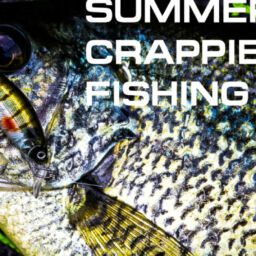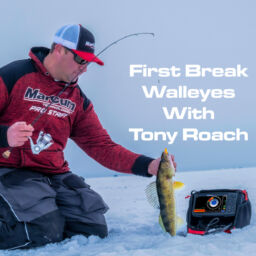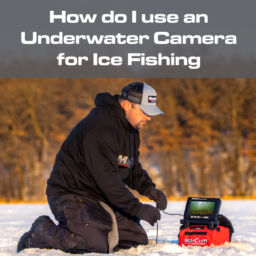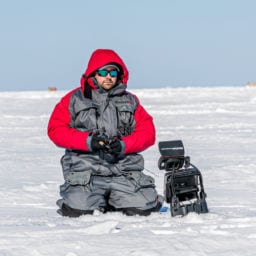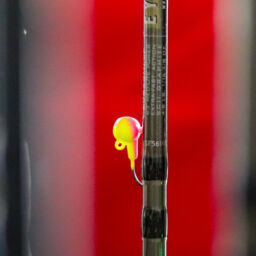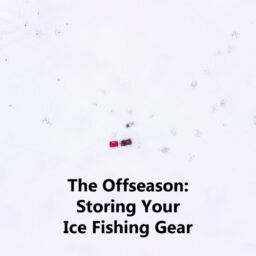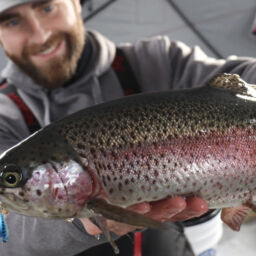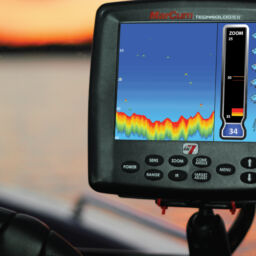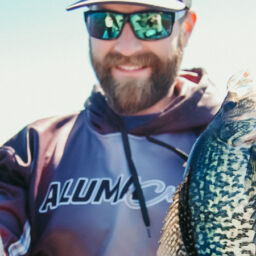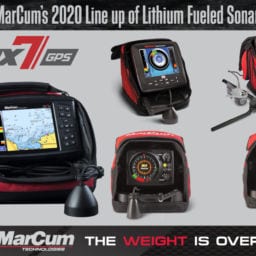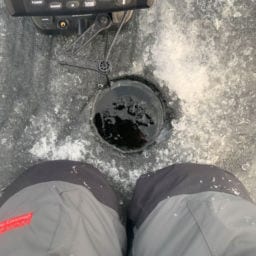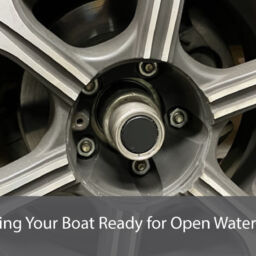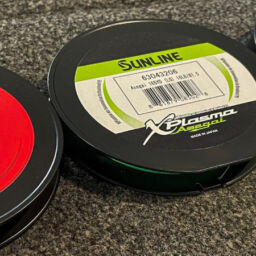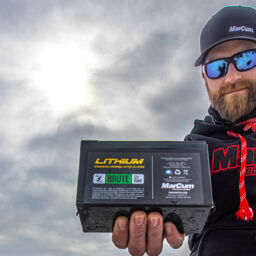
Winter Trout Fishing in Minnesota and Wisconsin

Panfish, walleyes and other game fish receive the lion’s share of angling pressure throughout the winter months – mainly because they are so accessible. Some of the more neglected targets during the ice season include stream trout species – rainbow, brook, and brown trout more specifically. Fortunately for ice anglers, states like Minnesota and Wisconsin put forth a great level of effort to ensure there are catchable trout opportunities available.
Stream trout are stocked across the Midwest in a variety of lakes and ponds. They are worthy adversaries for any ice fisherman and offer a unique experience. Determining the right combination of preparation, location, and presentation can lead to winter trout fishing success.

The preparation for winter stream trout should start well in advance of the season – mainly in the form of tracking down prime ice locations. A lot of these small, stocked lakes and ponds are unmapped or have significantly outdated bathymetric maps. Relying on current technologies can give an angler an easy advantage when the lakes are finally locked up.
If the water body is accessible during the warmer months, use a kayak or boat to do some preliminary scouting. For uncharted waters, a tool like Navionics SonarChart can pay huge dividends during the hardwater season. This tool allows the user to create a map of a lake or pond directly on their unit. MarCum’s MX-7GPS unit comes standard with Navionics compatibility and give anglers the ability to build custom maps.
Another valuable scouting tool for locating structure, cover or depth changes is satellite imagery. Satellite imagery is available from numerous online resources, like Google Earth, OnX Hunt, Bing Maps, etc. With high resolution, up-to-date aerial imagery anglers can pinpoint locations that are ideal starting points. Documenting the coordinates of these spots and uploading them to your phone or MX-7GPS, can lead to more promising results come ice season.
Perhaps the most valuable tools for finding winter trout come from the Minnesota and Wisconsin Department of Natural Resources. These tools have invaluable data ranging from stocking information to survey data to water clarity and quality. The Minnesota tool, LakeFinder, allows users to search by lake and/or county. Additionally, the state’s Recreation Compass allows users to find a body of water by map. The Wisconsin tool, Find A Lake, give users to opportunity to search by lake name, geographic location, fish species, water clarity, as well as a number of other factors.
For detailed stocking information, Minnesota users should rely on the LakeFinder tool, while Wisconsin anglers can track down this data through the state’s Stocking Database.
The Locations
Mobility is important for targeting many winter fish species, especially panfish. Trout, however, are a different animal – they are constantly on the move. The sit and fish style will often lead to more positive results – mainly because trout are so easily spooked. Since trout are so active, finding the right ambush point is one of the most important factors to winter trout success.
Being that trout are cold water species, winter temperatures help kick their activity levels into high gear. While many species move deeper during the winter months, trout tend to move shallower. Stream trout be found in nearly every area of a body of water – however, they tend to stay to in the upper portions of the water column. They inhabit both deep and shallow areas and rely on numerous cover and structure types to track down their prey. Nevertheless, there are key areas that an ice fisherman should put their focus on for increased success.

During lowlight periods, trout spend much of their time cruising shallow areas. It’s not uncommon to find trout in as little as two to three feet of water, especially at dusk and dawn. Shallow flats with nearby cover are prime locations to start the search. Areas adjacent to weedlines or submerged wood can create the ultimate ambush point, as trout are constantly checking these spots in search of their next meal.
During the day, trout tend to venture into deeper waters. Many stocked trout lakes are relatively deep, so locating suspended fish over 50-80 feet or more is typical. Focusing on structure-oriented locations, like points and steep breaks or drop-offs, will lead to more mid-day success.
If preliminary scouting is not a possibility and the areas are unmapped, an angler can rely on shoreline features to help determine a location. For example, trees that overhang into the water can be an ideal spot to wait out some trout.
Regardless of depth and location, holes should be drilled well in advance of actual fishing time, so account for this in the schedule.
Before setting up shop for the day, its good practice to complete some preliminary scouting to ensure you’re in the right area. Enter the underwater camera. MarCum’s Pursuit HDL and Pursuit SD+ are compact cameras ideal for quickly checking an area for the right stuff. As mentioned, trout often relate shallow structure and cover at lowlight periods. By verifying you’ve found the right habitat, you can increase your odds of success.

The Presentations
Presentations for winter trout bear great similarities to those of a winter panfish angler. Any ice fisherman that spends time targeting panfish will likely have everything they need to get started trout fishing.
Light to medium light rods pair well with winter trout techniques. Rods should be stout enough to effectively handle the baits and fish, but sensitive enough to detect bites. St. Croix’s CCI Perch Seeker (32” MLXF) has qualities that lend a helping hand to icing trout. The blank features a blend of glass and carbon in tubular form, making it extremely lightweight and sensitive, and the glass properties help to keep fish pinned.
Reels in the 500 to 1000 class are appropriately sized for winter applications. Due to harsh winter conditions, ensure the reel has a quality drag system. Spool reels up with three-to-five pound fluorocarbon. Fluorocarbon line is the preferred choice for these applications because of its nearly invisible and highly abrasion resistant.
Panfish sized lures are ideal choices for winter stream trout. Lipless crankbaits, spoons and small jigs all have their place in the lineup. Aggressive presentations, like lipless crankbaits, are effective at calling fish in a from a distance – for example, Eurotackle’s 1/16 Z-Viber. Coming in at one inch in length, the bait features internal rattles and a free-swinging, single hook – which can be paired with a soft plastic or live bait for added attraction. The single hook keeps fish pinned, but also makes for quick and easy removal to get fish back in the water.

Sometimes less aggressive presentations are required to coax fish into biting. Small spoons and tungsten jigs with waxworms, spikes or minnows can certainly helping close the deal. Because trout are constantly on the move, work your baits throughout the entire water column. Focus primarily on the upper half of the water column – trout have no problem chasing a bait.
Set lines also have a place in winter trout fishing applications. On certain days, deadsticks or tip ups can account for a number of fish catches. Set lines should be paired with light fluorocarbon leaders and small hooks. Bait selection is dependent upon forage base, but small crappie and fathead minnows are top choices for trout.
Flasher and sonar systems are valuable tools for ice fishing, and trout fishing is no exception. Trout can show up anywhere in the water column so it’s crucial to have a view of the entire area at any given time. Tools like MarCum’s LX-7, LX-9, and MX-7 provide users with customizable views no matter the situation. For example, a fisherman could set up the unit to get a combination of two or three different views – including the full water column and 5, 10, 20 or 40 foot portions.

With the right planning, setting and tools, an ice fishermen can surely put some trout on the ice. To find more information about ice fishing for trout, visit the Minnesota and Wisconsin Department of Natural Resources sites.


